Subscribe to the Newsletter
If you are interested in understanding how Traditional Chinese Medicine can improve your life sign up to my newsletter for the latest updates.

Key Learning Points
As you grow older, Blood Stasis (also known as Blood Stagnation, though the terms technically mean something slightly different) will almost certainly affect you.
It’s a major constituent of ill-health, particularly chronic ill-health.
It occurs in just about all enduring or chronic diseases, and is the cause of many of the signs of ageing.
It often occurs where you have tumours and fibroids, and in many forms of cancer, but also when you have varicose veins and ulcers.
It’s also implicated in serious life-threatening conditions like stroke and heart-attack.
So … important!
If you can prevent it, or at least postpone it, you’ll age more slowly and you’ll look and feel younger than your contemporaries.
Blood Stasis is an important topic in Chinese medicine, so there’s a lot to it. Settle down for a read – this is quite a long page!
And now, it seems Covid 19 may cause Blood Stasis in some people’s lungs. If so, treatment (eg herbs, acupuncture) to move Blood in their chests may keep them alive.
Before getting into Blood Stasis – just a quick word on one of its main causes – Qi Stagnation: click here to read the page we have on that, but for a much more detailed (and interesting, I hope!) explanation, read my book on the subject.
So … What is Blood Stasis? Although it can occur from many causes (there’s a list below) let’s take an analogy.
Suppose you have a river running from where it rises as a spring in the mountains, In the mountains, the water is clear and cool. As it runs along, down steep hills and over waterfalls, it runs fast. It erodes the earth and rock, picking up sediment and carrying it downstream. On the way, it drops some of that sediment, but the speed of the water often picks that up again and carries it further. However, as it broadens out in the lower reaches, the land is flatter and its speed comes not so much from gradient as from the mass of water which different tributaries have contributed to it. So it still moves fairly fast, and after heavy rain or after winter, can still pick up plenty of sediment. Eventually it reaches the sea and here is spills out with no further to run. Here tides take the water in and out so its onward progress is much slower. Down here, moving sluggishly it begins to drop sediment. This silts up the waterways, creating a delta of mud-banks and islands. |
This analogy helps us understand how Blood stasis occurs and the problems it causes. In the upper reaches, the river is young and rushes along, with clear water, great noise and energy – like many healthy youthful people.
As the river grows older (its lower reaches), the water is not so clear, and it moves more sedately. Moving slowly it freezes more easily, and conversely sudden storms make it overflow its banks, producing damage and mayhem: it doesn’t recover so quickly from trauma. |

The river Danube in Budapest (pictured above) moves slowly. Large river craft ply its reaches. It can freeze over. It’s hard to alter its path. Likewise, older people don’t adapt so easily to surgery and accidents. They get cold and stiffen up more easily.
In some rivers, in drought – which seldom affects the high mountains streams – the river dries, causing death to the fishes and stagnant water which has no force and no ability to nourish the land alongside it. Consequently the earth dries and fails to nourish the plants and animals. |
In your body, your flesh wrinkles and dries out. Compare that with the flesh of healthy young people, which is full, well-nourished, elastic and of good colour: all those qualities that gradually erode with age.
If for some reason, perhaps a dam or a landslide, the river is dammed up, it stops moving. As the water forces its way through, there’s noise and the problems can be huge. |
Think of the pain round an inflamed, swollen joint when it is forced to move, especially in the cold.
In certain places the river enters a lake, where water can stay for ages before finding its way out. If the lake has a healthy environment and isn’t contaminated, the water will remain fresh and eventually flow onwards, having nourished wildlife and the land around it.
But in such a lake, if farmers take too much water for irrigation purposes, or heat evaporates it too vigorously, the water may fall to a level too low to run away, so it stops moving.
Then you get stasis and the water will putrefy or silt up.
Similarly, in body cavities (such as your abdomen, your chest or your head) and round joints where there are lots of little cavities, the Blood can ‘silt up’, leading to Stasis.
Your heart is a body cavity too.
When it silts up, or a valve gets blocked or tired, it can struggle to keep going – or stop.
Then you have a heart attack.
This stasis is like a very slow-moving traffic jam. From a Western perspective your blood is still moving otherwise you’d have tissue death but from the Chinese perspective your Blood isn’t moving properly – hence Blood ‘Stasis’.
This could have been causing you mild long-term problems which you attributed to something else.
The presence of Blood Stasis isn’t always obvious!
The symptoms run from mild to severe. You might have very few of them. However, the more severe your condition, the more of them you’ll probably have.
Moving from the milder to the more severe symptoms (of course, you may not have all these, and their order is only approximate):
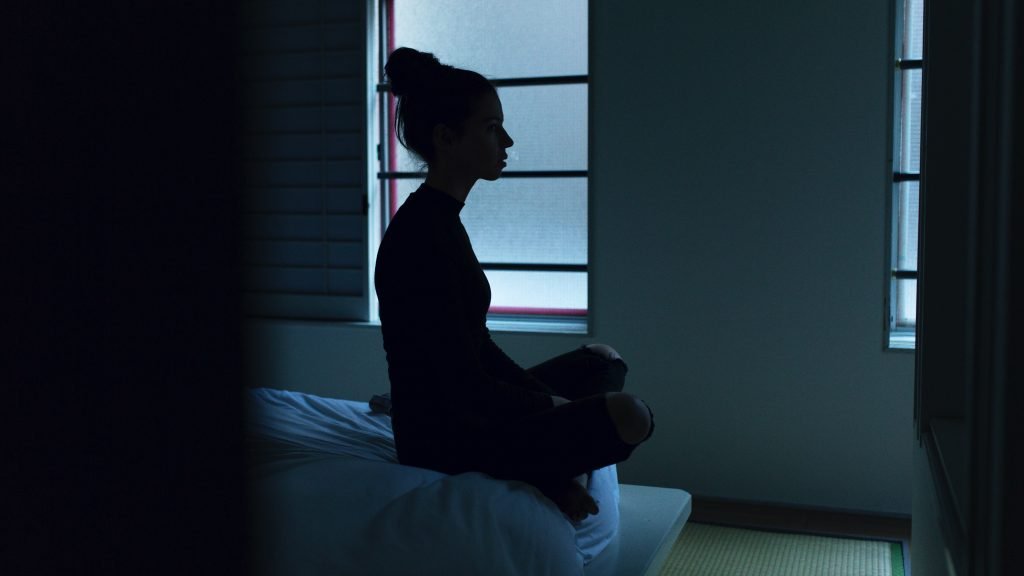
Many Western diseases have signs of Blood stasis (though they may have other causes, of course).
To list just a few:
Blood Stasis can lead to Qi deficiency. (Click here for a page on Qi deficiency tiredness.) That means tiredness, with your body feeling heavier than when you’re well, and lowered spirits. Possibly you find yourself taking more deep breaths than normal. Talking for long periods becomes an effort. And you like taking more short sleeps (naps) throughout the day.
Of course, Blood stasis also means not enough new or renewed blood reaches a local area of Blood Stasis.
Local symptoms of Blood Stasis that you might develop after an injury could be merely a patch of drier or darker skin: by ‘darker’ I mean that it might be purple or blue or dark compared with surrounding skin.
In cold conditions that colour might deepen. For example, after a fall on your knee, where you fell might develop darker skin that goes purple in cold weather. Keeping yourself flexible, regular exercise and some acupuncture and moxibustion on the area and along the channels (see next) may mean that you keep Blood stasis there at bay.
A localised patch of skin like this will lie on the path of one or more of your acupuncture channels and, in theory if not practice, there may be a slight reduction in the functioning of its corresponding Zang-Fu.
For example, if it lies on your Stomach channel, you may find your digestion is in time slightly less effective than previously, or you don’t digest food quite so well, or food doesn’t fill you up as efficiently as once it did – so you might over-eat, because your stomach doesn’t send the ‘I’m full’ message to your brain. Sometimes the opposite occurs, so you feel full or replete after even a small meal.
Or, lacking blood to repair the nerves and flesh affected, say by an invasion of wind-cold to the finger or ear, you may get numbness and tingling.
In fingers, Western medicine might diagnose something like Carpal Tunnel syndrome (CTS) viewing it as a nerve problem, whereas Chinese medicine suggests that (say) Cold has inhibited the blood-flow to the area, causing deficiency of both yang and Blood.
For CTS Western medicine then eventually inclines towards medications (often NSAIDs for inflammation and pain, though these often don’t work well, or corticosteroid injections to reduce inflammation and reduce pressure on the median nerve), splints or surgery.
Instead, Chinese medicine aims to eradicate Cold, nourishing Blood and clearing any blocked acupuncture channels.
In acupuncture theory, there are a number of causes of Blood Stasis, explained in more detail below.
Here’s a list of the main causes:
The first cause, at least in the West or more developed countries, is often Qi stagnation. (Click on the link to read more about this.) Qi Stagnation works like a block. In theory, healthy Qi is like gravity and pulls the river water closer to the earth’s centre, (to continue the analogy from above). But if, for whatever reason, that force is reduced, the water – the Blood – cannot flow so fast.
You can read about the main causes of Qi stagnation through the link above, but mainly they are emotional, being made up of frustration, sadness, grief and anger. They disturb the flow of Qi – the flow of vigorous life through you – which then can’t move the Blood.
If the emotion consumes you for too long or too strongly, ie is too violent, it can cause Blood stasis. As you would expect from the analogy of the river, this occurs more easily where there are the body’s equivalent of lakes or stretches of slow-moving water.
For example, qi stagnation acts more powerfully, or is easier to acquire by older people, in cavities in the body like the abdomen (hence women suffer from pre-menstrual tension and menstrual cramps) and the chest (where the heart may suffer from Heart Blood stagnation) or the Lungs may experience Lung Qi stagnation.

In older people who inherited a genetic tendency to varicose veins, or even those who didn’t but took too little exercise, or anyone who tends to sit around too much (think of all that sitting at desks – which you’re probably doing right now too!), the veins begin to silt up.
However, standing still or hardly moving from a standing still position could be a cause too.
For instance, if you are a policeman or guard standing still for long periods, or a hairdresser, or a politician giving speeches all the time, or perhaps community councillors who have to be on duty receiving representations, or naval personnel on the ship’s bridge on duty for hours – all these might develop varicose tendencies.
Eventually, the slow-moving blood thickens. Then you can get clots leading to heart attack or stroke, and/or varicose veins, potentially leading to varicose ulcers.
Even after you’ve developed symptoms of Blood Stasis, you can prevent further deterioration by taking appropriate exercise. The main thing to emphasise is that if you have clear symptoms of Blood stasis your exercise should be gentle to begin with, increasing the force and speed only gradually.
The aim of exercise is to move the Blood and, with treatment (see below) exercise of the right kind – take advice, but Tai Ch’i is good – can often bring you back to full health. For some, skipping is good, but not if you haven’t done it since childhood! Taking a good walk everyday is excellent.
If you do have to sit or stand still for long periods, try to move around every half-hour, even if you just get up, stretch and move from one foot to the other a few times.
Ideally you move enough to raise your heart-beat, because that enlists your heart organ, pushing blood round your whole body, including your brain, and making you breathe deeply to enrich your blood again.
But don’t leave it! Exercise takes longer to work the older you are – or the more frail – and the more severe your Blood Stasis.
Here’s something you could do that gets your blood circulating, puts you slightly out of breath, can often be done beside your desk – and takes just 4 minutes! The nitric oxide dump!
If you’ve had an operation for something you now realise was caused by Blood Stasis, then you must be even more careful.
The operation itself can cause Blood Stasis (see below), but any operation also disrupts the flow of Qi and you may first need rest and recuperative time before you start a steady exercise regime. Even exercise may then not bring you back to 100%, but it will help.
Don’t overlook the effect of OVER-exercise, for which see over-strain, below.
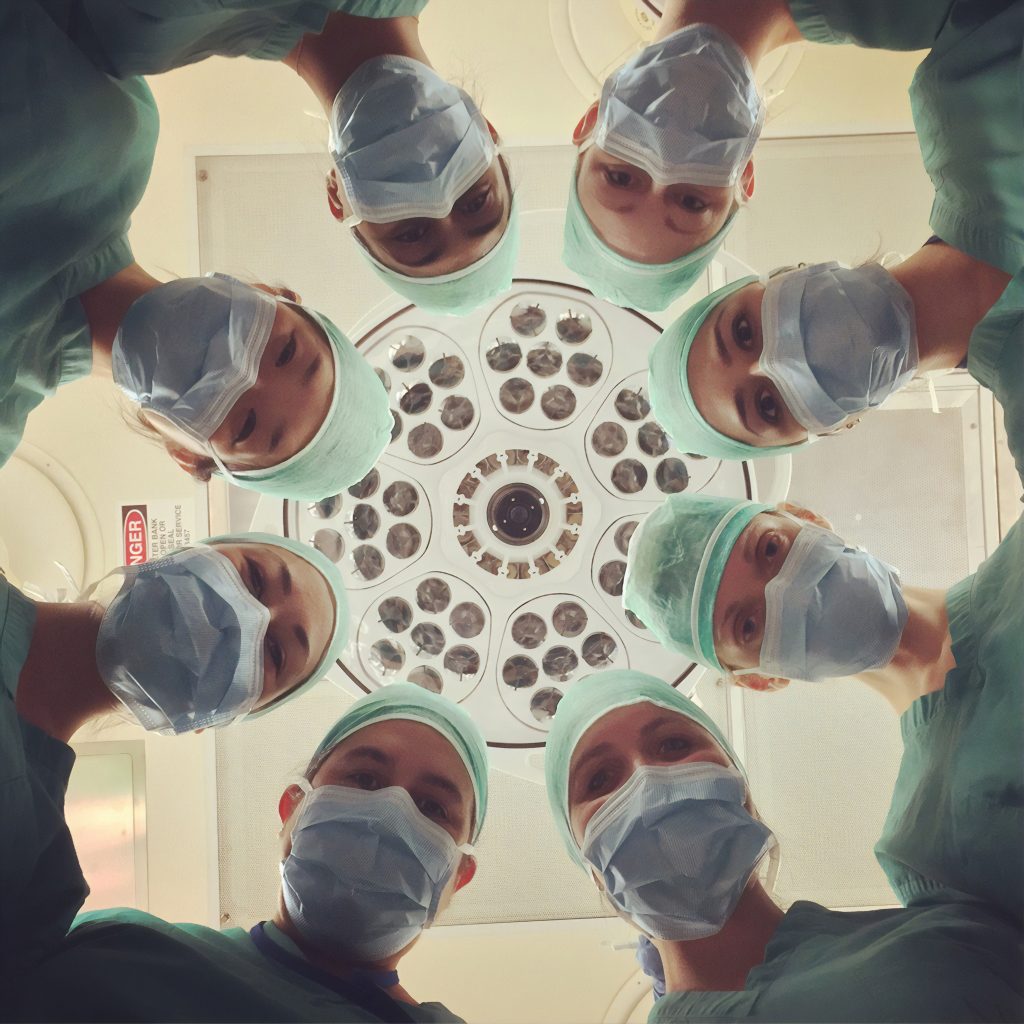
Trauma takes many forms: accidents; bruises; turmoil caused by sudden overwhelming emotions; physical over-strain; miscarriage; abortion; surgery including immunisations which are invasions through the skin injecting foreign matter. These upset or prevent the free flowing of Blood, leading potentially to Blood Stasis. Indeed, it’s almost a rule in Chinese Medicine, that where there has been surgery, there will be Blood Stasis.
the body suddenly loses part of itself, the foetus. So you get a form of Blood Deficiency too. Whether expected or not, it’s a shock to the parents, especially – physically – for the mother. In the list of acupuncture points given below, one would certainly add points to calm the Shen-Mind and steady the circulation. (There are many kinds of Blood deficiency, for example see Heart and Spleen Blood deficiency.)
(By the way, although expected, even a ‘natural’ birth is also a shock and can lead to forms of Blood stasis in the mother. Often the emotional ‘blues’ she gets during the days after the birth are greatly helped by treatment for Blood Stasis.)
Nowadays, tumours can often be removed by surgery, but this doesn’t usually improve the underlying condition that led to the tumour and surgery in the first place. If that’s the case, the condition will tend to recur with the added problem that if surgical procedures cut the acupuncture channels, along which Qi travels, Qi and Blood flow may be compromised.
Surgery or accidents to the head or spine can often lead to Blood stasis. Many women who had epidurals during childbirth go on to experience symptoms of Blood stasis later on, without relating them to the epidural which they had many years before.
Caesarean Sections (CS), which are operations to remove a baby directly from the abdomen at childbirth instead of the ‘natural’ way through the vagina, may cause considerably scarring – see below – and are not inconsiderable operations anyway. They often lead to blood stasis in the abdomen: that, in time, can look like swelling, almost as if pregnant, very hard to shift by diet and exercise.
What’s more, if you’ve had a CS (Caesarean Section) when giving birth, you’ll probably have a big scar across your abdomen. This saved your baby’s life – and may have saved your life too! – but the surgeon cut right across some of your most vital acupuncture channels, including Ren Mo, the Stomach, Spleen and Kidney channels and it would certainly also have interfered with your Liver channel.
In effect, it cut you in half! That scar may cause many problems in the future, and of course, it’s nearly impossible to attribute those later problems to the scar, at least as far as Western medicine is concerned.
The least you can do is to massage the scar daily with good oils or creams. If you do this it may largely disappear, together with some of those long-term consequences. At least, so predicts the theory in Chinese medicine.
(Which oils to use? Surgeons recommend and use Kelo-Cote. Others like InstaNatural Scar Gel cream. I have patients who simply used olive oil and/or Arnica oil or Vitamin E cream. But the massage is what helps the different parts of your body reconnect!)
(Arnica Montana is a herb that grows in mountainous areas, and was or is apparently chewed by mountain guides in the expectation it will ameliorate damage from accidents and falls.
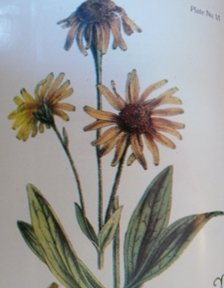
It is an important ‘remedy’ in homoeopathy, used in all sorts of situations of shock and trauma and after surgery.
I have a 73-year-old colleague who maintains that Arnica cleared her chest congestion during the later and more serious stages of Covid 19, when other treatments had failed.)
Being a form of Blood stasis, the scar often benefits from herbal creams that move Blood: but all these scar-removing oils and creams require persistence.
It may take a year of massaging the oil in up to three times a day: it certainly won’t go in half-an-hour, done just once!
Also, to clear the internal scarring it’s worth doing exercises for your abdomen. I don’t mean doing crunches and planks – or not until much later.

I’m talking about the rippling motions in the abdomen from belly-dancing which in any case is a great way to enhance abdominal health. But if you’re learning belly-dancing, start well before you hope to become pregnant, don’t do it when pregnant (or take advice on this) and don’t re-commence after your Caesarean section operation until the cut has properly healed.
Overstrain – another kind of trauma – can occur in older or less fit people, and in supposedly fit people who push themselves too hard over a long period of time, even from
In fact, heavy lifting even by young people can cause Blood Stasis. It depends on body shape, strength, fitness and so on.
Many women can, with suitable training over time, build enormous strength, just like many men.
Many women are much fitter and stronger than many men, anyhow. But anyone trying to increase strength even further can over-strain.
The effects of this may not appear for many years, but in some it can come on in weeks.

Over-lifting (including pushing yourself too hard for too long in some other form of exercise, even if it felt fine at the time) also strains Kidney Qi, especially Kidney Yang.
You might begin to notice this if you or your hands are always cold, or they remain cold until you’ve done a lot of exercise to warm up.
This might indicate that your Kidney deficiency has begun to lead to Heart deficiency … and eventually can lead to other signs of Yang deficiency and disturbed sleep…
… if so, you might be getting occasional palpitations (or slower pulse, or intermittent pulse, arrhythmia or maybe fibrillation) too. This is not yet dangerous, but perhaps you should see your friendly neighbourhood acupuncturist!
I emphasise, the effects of over-strain may not appear for years. But they may come within a matter of days, weeks or months in susceptible people who push themselves too hard…
… even if they thought they were fit and strong.
As mentioned, you end up with a form of Yang deficiency (about which … ahem…, I’ve also written a book.)
This is where Blood flows chaotically from where it should. It can occur in trauma (bruise, accident, surgery) but also from Heat (eg excessive Summer Heat) or from a condition of ‘Heat’ caused emotionally.
For example, sudden extreme anger in someone usually quiet and courteous betrays not just an underlying tendency towards Qi stagnation but can lead to a form of ‘Heat’ that endangers Heart Qi, causing missed or irregular heartbeats, poor sleep and, in those who are unfit, possibly serious complications.
This isn’t a physical haemorrhage but can lead to it, as for example in stroke.

Stay in Touch!
No spam, only notifications about new articles and updates.

Book a Video consultation if you want to know more about your symptoms
Long-term Qi deficiency, which may occur after illness or ongoing exhaustion from work and a lack of rest, or as you grow older, works like low gravity on a river.
The lack of Qi fails to move Blood as it should.
In the West, our hectic lifestyles often mean we don’t eat properly, so we lack enough nutrition to keep us well, and we don’t rest enough after eating, so we don’t digest our food properly.
Poor nutrition can lead to poor Blood quality and movement, leading to Blood Stasis. Nutrition is a big and important subject, and it’s something many people can do something about for themselves. For health you need both blood-building foods and blood-clearing foods, enough of the right kinds of fats, including some saturated fats, and so on.
Also if we eat while working, our ability to absorb nutrition from the food we’ve eaten may be reduced.
Why? you ask!
Well, consider! Increasingly research indicates an important relationship between your gut, your digestion, and your mental and physical health.
If you eat junk, it will eventually affect your well-being.
In Chinese medicine, there is a very important link between your Spleen energy and your thinking and your spirits – your Shen-Mind. Drain the first – your digestion – by poor eating habits, and you weaken the latter, your ability to think.
Nowadays, Western medicine has recognised the importance of your gut health, your gut biome, for many areas of general health, including your brain and thinking.
Is it so hard to accept that if when eating you put energy into thinking that you may weaken the Spleen, which ‘rules’ your digestion?
This, if combined with long hours at work and insufficient sleep, contributes to Qi deficiency.
This leads to a build up of Blood Stasis in the body’s equivalent of lakes, eg our abdomen, or round joints which we don’t move enough.
What happens?
We stiffen up!
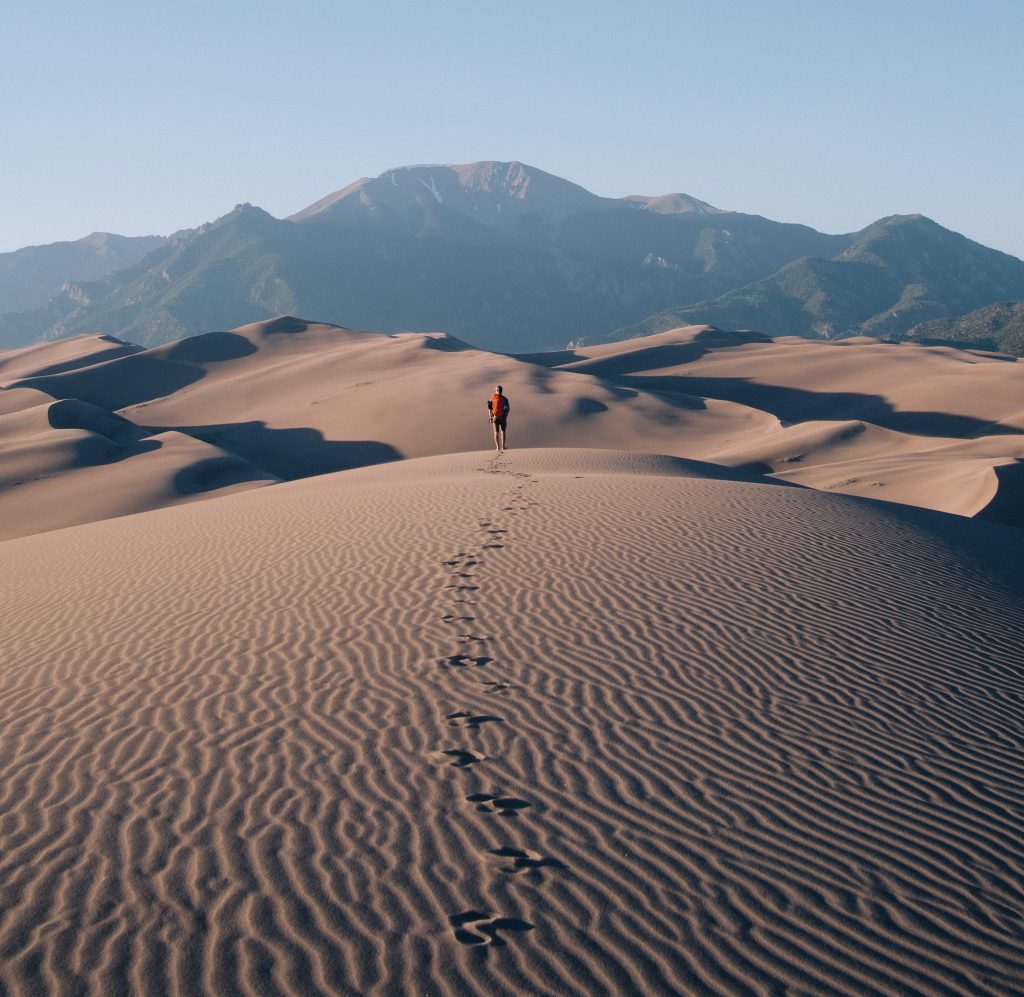
Besides Heat there are 6 possible climactic (or ‘exogenous’) causes of disease in Chinese medicine (the others are Cold – see below – Dryness, Wind, Damp and Summer Heat) any one of which can cause Blood Stasis, but this one – Heat – either dries out the Blood or causes it to overflow – to haemorrhage, which we mentioned above.
Of course, radiotherapy, exposure to nuclear fission sequellae and X-Ray treatment are also causes.
In a drought rivers becomes just puddles in a waterbed, so flow stops: no longer can Blood reach and repair damaged areas. So Heat dries, reducing moisture, and thickens, leading to scarring. In response, Chinese medicine uses acupuncture and herbs, for example, to concentrate the body’s ‘mind’ to make better Blood and move it more efficiently to where needed.
Cold slows Blood circulation. Blood moving slowly can’t nourish the tissues so effectively. (Using the analogy of the river, it freezes over.)
Cold is a major cause of Blood stasis. In women it can appear as pelvic fibroids. The originating cause may often be traced back to getting cold at some earlier time of life.
Getting cold like this could have happened frequently over a period of time, but sometimes in susceptible individuals getting really cold even just once can do it.
How could this have happened? Well, if for example:
Cold creeps up the legs and settles in the abdomen. Here it can cause Blood stasis which is felt as definable, fixed masses, such as fibroids. Of course, bare midriffs in winter, while attractive, don’t help.
Men! It’s not just women who wear too little or take too little exercise. You could be out on a cold day, but not moving much or wearing enough, and get really cold, so you find yourself shivering uncontrollably. If you’re young you may recover quickly once you’ve warmed up, but at any age you can get seriously chilled.
Anyone not wearing enough on a cold day, even if exercising hard, is potentially susceptible to Blood Stasis from Cold.
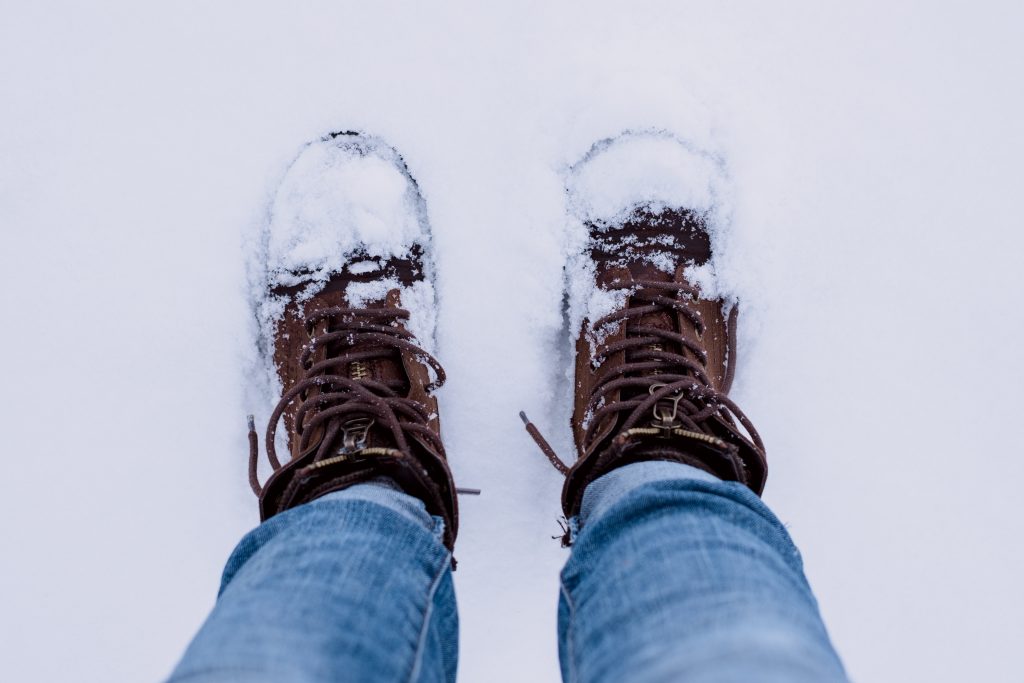
The same occurs if, after exercise on a cold day, you hang around in the cold air before showering or bathing and changing to warm clothes. Worse still, says Chinese medical theory, if you were sweating from the exercise and allowed the cold air to cool you down.
A lack of Blood can also cause the condition, just as a lack of water in a river stops it flowing, leading to puddles.
Blood deficiency can occur when there has been an actual loss of blood (as in Haemorrhage – see above), or over time from a poor diet and poor eating habits. Blood deficiency occurs in a variety of situations, and can seriously affect our minds and thinking as well as our bodies.
For more on Blood deficiency, chose from
Improving the diet may be all that’s necessary here. I remember a builder had great pain from varicose veins. When he made some big changes to what he ate, the pain went and in due course the veins appeared to shrink too. We were both very gratified, and surprised.
As your body ages, it becomes less efficient.
So Qi is moved less, the food you eat works against you, and you get Qi Stagnation … so you get blood stasis!
Look at your heel. Is there any similarity to the heel of a patient in the photo?
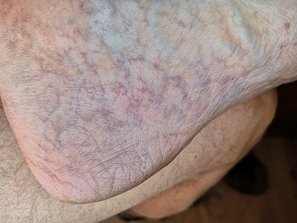
Yes? Well, those veins are signs of blood stasis, though don’t assume that all blood stasis veins look like this.
Besides the signs mentioned above, there are other signs which an acupuncturist would look for.
For example of the face, or part of the face or the nose, which may be darker than it should be, and with a tendency to darken rapidly in cold weather.
Fingernails go purple too.
Where there is Stasis of the Blood, the colour of the body of the tongue is usually purple in whole or in part, depending on where the main stasis occurs.
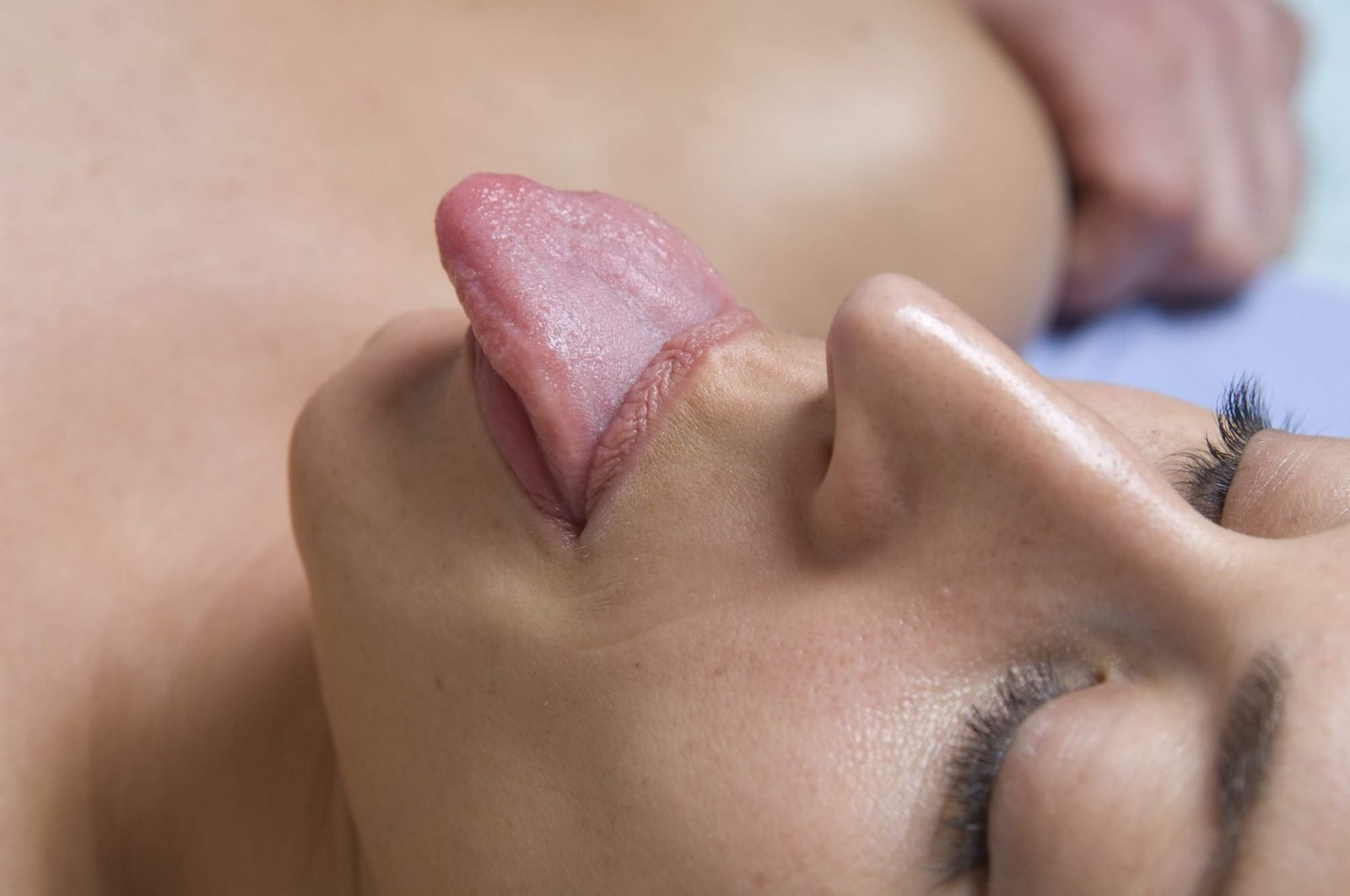
(By the way, the tongue pictured does not have signs of Blood stasis.)
The underside of the tongue will show two veins, one on either side of the frenulum (its correct name is frenulum linguae), engorged with purple blood.
One more engorged than the other suggests stasis on that side.
The pulse in people with Blood Stasis is usually wiry, and may be choppy, or knotted. These descriptions, ‘wiry’, ‘choppy’ and ‘knotted’ are technical terms learned by acupuncturists and take some time to learn to recognise. (A ‘knotted’ pulse is somewhat intermittent, like pulling string through your fingers and feeling knots at irregular locations along the string.)
In addition, there may be enlargement of some of the organs, again depending on the kind of Blood Stasis. For example, with Liver Blood Stasis, the liver organ may enlarge.
The acupuncturist also looks for the underlying reasons behind the Blood Stasis. These may include a history of Qi stagnation, Trauma, Cold or Qi deficiency, for example.
Dealing with these may be difficult. A tendency to anger, causing Liver Qi stagnation, can with practice be gradually controlled, but years of exposure to Cold or Damp require treatment – see below.
Any single one of the above factors can lead to Blood Stasis.
But I would say that more often it is a combination of factors that does it.
For example, it may be that someone with mild Yang Deficiency symptoms – perhaps from over-exertion over a long period of time – then gets cold one day and is unable to warm up properly until some time afterwards.
That might be enough to precipitate much stronger signs of Blood Stasis – see the list above. Because the coldness occurred only once, and the symptoms didn’t follow immediately after the over-exertion, the latter is discounted even though it was the primary cause.
Here the cold was the last straw (‘that broke the camel’s back’), but actually it was the long-term over-exertion that was the primary cause. (The camel’s back would not have been broken by the last straw unless all the other straw had been there in the first place.)
Remember that when you are tired you are more susceptible to cold. Indeed, some people realise they are tired because they feel cold.
Returning to the analogy of the river, you may understand that Chinese medicine seeks both to increase the flow of the river and to pick up and carry away the silt. For this to work in a river, there must be enough water with enough force.
Similarly there must be enough Blood and enough Qi, and the Qi must be flowing smoothly.
Also, the environment must be neither too hot nor too cold.
Chinese medicine developed some interesting treatments for this. Let’s start with the milder ones.
But don’t forget Common Sense!
For example,
If you don’t exercise, your Blood will tend to Stasis. Exercise is beneficial in many ways now recognised and much researched in Western medicine. Chinese medicine absorbed the benefits of exercise at least 2000 years ago and gave us Qi Gong and Tai Qi.
What suits one person may not suit another. Find something you enjoy doing, either alone or with friends. NB If you are very unfit, take advice before you rush out to exercise!
Western science would probably suggest ‘peak’ or ‘interval’ training, where you exercise (eg run) flat-out for 30 seconds, then walk or jog for 90 seconds: then repeat 7 more times. This takes a while to achieve if you are unfit. Don’t push too fast! Work up to it gradually. But this does have the effect of placing a short-term heavy load on your circulation which, people find, rises to the challenge.
However, that’s not the Chinese way. Even so, for many it works. But if you have doubts about your ability, do get professional advice first.

When it rings, get up, go for a walk; stretch; bend. Move your legs!
This becomes more important as you grow older, because you have less Qi and you have more aches and pains – which discourage movement. So Blood stagnates even more easily for you. All the more important to move regularly.
Take up yoga or Pilates, both of which have exercises or positions where you gradually learn to remain upside down for a while, helping to drain static pools of blood back to your liver, lungs and heart for repair and refurbishment before being sent out again.
Yes! Upside-down postures, even just putting your feet up higher than your body, such as when lying on your back with your feet on a cushion higher than your pelvis, use gravity to move the blood.
(But please! If in any doubt, do get professional advice before you start pointing your feet at the sky!)
However, these postures are not the whole picture. The blood stasis occurs for reasons mentioned elsewhere on this page: in all cases because blood is not moving. Part of that comes down to your heart, not pushing the blood around fast enough.
What kind of exercise? Well, enough to get everything moving and for enough time to make it effective. The kind of exercise doesn’t matter that much, but for many, walking fast enough to get out of breath, and for 10 – 20 minutes, would be good. Maybe a walk round the block?
Or try the 4 minute nitric oxide ‘dump’ – but do it several times a day.
If you don’t eat the right food, and you do eat the wrong foods, you’ll make your symptoms of Blood Stasis worse, or at least no better. Take advice or read up on good nutrition.
Avoid Foods with a Cold energy, especially in cold weather or winter.
Many refined foods and junk foods block you up and cause heat, which dries you out and weakens your Blood, just as a hot summer may evaporate water from the river, leaving only puddles. Those puddles show the water isn’t moving, another form of stagnation – and the same with your Blood!
Eating too fast, not chewing properly, not taking time to digest food after eating, can all lead to impaired digestion and absorption of good nutrients. Rushing your meal can lead to food retention, which blocks up your abdomen and can make it more susceptible to Blood stasis.
Humans have realised the benefits of hands-on stroking, rubbing, kneading, rolling and percussing flesh for millennia!
Moving the flesh moves the Blood and stimulates the Qi.
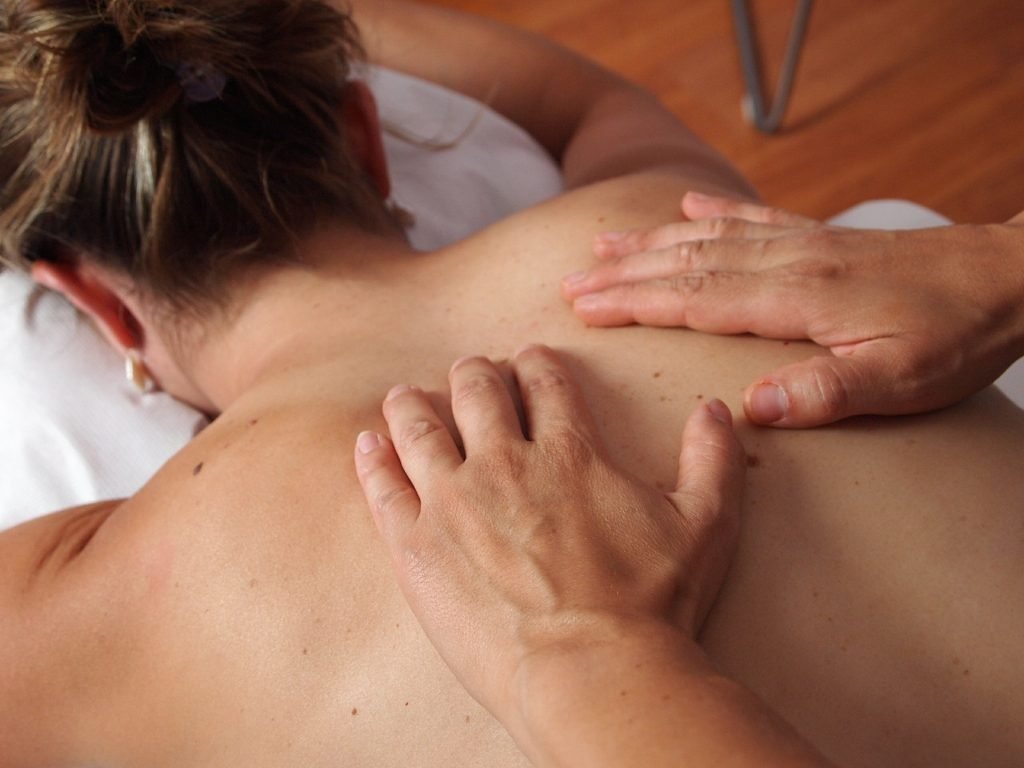
Quite apart from that, massage makes you feel great!
Most acupuncturists are trained in massage.
What about Reflexology? – I hear you ask. Reflexology is great, and stimulates your body in many ways, but I believe that all-over body massage is, for the purpose of reducing Blood Stasis, better.
Guasha is a special way of scraping the surface of the body. It reveals the presence of Blood Stasis and by revealing it, allows it to move.
The only problem is it leaves marks behind, though they do heal after a few days. A rule of thumb is that the longer the marks take to go, the deeper was the Blood Stasis.
In a way, Guasha produces a bruise, which your body them heals. That bruise indicates the accumulation of old blood, Blood Stasis, the memory of which your body has been retaining. Guasha forces the problem to the surface and makes your body do something about it.
Many acupuncturists are trained in Guasha. Get one to show you how to do it if you have an accessible area of blood stasis, say round your knees where you could do it yourself.
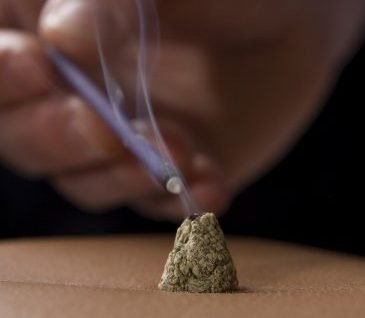
If Cold caused the condition, then warmth may help. For example, use warm wraps, a hot water bottle, moxa, warm drinks and food, gentle exercise and breathing exercises to warm and move the Qi, so as to lead the Blood to move. However, this is mainly palliative.
Alternate warming and cooling also stimulates Qi. As this quickens the Qi, Yang increases and Blood Stasis begins to move. Water therapy such as the Sitz bath works like this.
Many acupuncturists can tell you how to do this.
Similarly, cold showers can stimulate your Yang energy to move the Blood. But there’s a wrong and a right way to take a cold shower!
Or getting warm in a sauna, then cold in a cold-dip pool. But please don’t do this if you are just starting out to get fit – too much cold on an unfit heart can be dangerous. First learn the proper way to take a cold shower.
Read more about cupping here, Cupping is a great way to treat Blood Stasis. On its own, regular cupping can greatly benefit health in a number of ways. Alternate it with massage.
It can be combined with needling as explained below and to increase bleeding from points previously pricked to draw blood.

However, blood-letting (see below) doesn’t always work so well where the stasis is deep, as in some cases of fibroids. In this case, cupping is applied over the skin area above the tumour as well as on on specific acupuncture points known to affect the channels and organs affected.
Cupping can be done at home, but please – if you’re a patient and determined to do it yourself – read our page on Cupping carefully and perhaps let someone experienced teach you before you start.
Most acupuncturists are trained in cupping.
Acupuncture is used to stimulate the body’s Qi to move and, in this context, to lead the Blood away from the area of Stasis. Also, of course, it helps you feel much better generally, and as your health improves, so will your ability to cope with, and potentially rid yourself of Blood Stasis.
5 Elements acupuncture will improve emotional causes of Blood stasis, clearing up Qi stagnation.
Specific points for Blood Stasis include:
Chest problems:
For energy and Blood deficiency problems:
Qi Stagnation problems:

For warming the channel system and so invigorating the Blood:
These are just a selection of points to consider. The syndrome diagnosis would suggest other points. Also, treating the appropriate luo-connecting channels would be important – a treatment noticed 2500 years ago and described in the Huangdi Neijing Ling Shu and Su Wen.
For blood stasis Master Tong acupuncture system recommends blood-letting at specific acupuncture points on the back. (Which points? That depends on where you have the main problem – your knees, for example.)
Acupuncture works very well with other methods described here like massage, cupping, guasha, and Blood-letting.
This mild treatment often uses a specially shaped needle to allow drops of blood to escape. This is very safe and the amount of blood involved is just a few drops.
Is actual loss of blood necessary for successful Blood Stasis treatment? Not necessarily. But when carried out at specific acupuncture points it can be very effective.
For instance, there is a blood-letting treatment for acutely sore throats, where there is often a degree of Blood Stasis. (When I got a sore throat I first used needles at the point in question to alleviate the pain. However, this wasn’t successful until I started releasing a few drops of blood from the point: then the improvement was considerable.)
Does it hurt? Well, yes – a tiny bit! But no more than pricking your finger with a needle – and think of the benefits! The temporary discomfort is so much less than the ongoing soreness in the throat!
Here’s a tip for reducing any discomfort. Before this or any treatment that might cause you anxiety, take a deep breath then, as the needle inserts, breathe out explosively in one long out-breath.
There is evidence that giving blood regularly reduces the frequency of heart attacks. (Click here to read the paper in question.)
Why might this be? Presumably because your body has to create more blood to replenish the blood donated, and that new blood will be comparatively fresh and new, less full of garbage. (Garbage?: new technical term in Chinese medicine.)
However, if you wish to donate blood, please do it responsibly, using good hygiene, and be properly monitored. Your local blood transfusion services will be delighted with your company and most grateful. They’ll also ask questions and do tests to make sure you are healthy enough to give blood and that the blood you give is up to standard.

If you are too old to give blood (in Scotland the usual limits are 17 – 65) then you may find that the very small amount of blood let when performed by a trained acupuncturist helps your health in many ways, if done according to the practice and theory of Chinese medicine.
I don’t claim that blood-letting with acupuncture is as effective as blood donation for transfusion purposes, but when done at places where blood flows only slowly, such as your extremities, you may be surprised how well it works.
One more warning! Giving blood means reducing a vital form of Qi, being Blood. Don’t do it if your Qi or Blood is deficient. Read more about this by clicking here or there.
Until two centuries ago in the West, drawing out blood was a recognised and valuable treatment, though much abused because doctors didn’t understand when not to do it. Hence it got a bad, if not a barbaric, reputation.
In China, it wasn’t used except where the Doctors diagnosed the need for it, that usually being Blood Stasis.
However, we are waking up, gradually, to some of the wisdom and experience of our forefathers…
A report in Family Practice News August 1, 2002 page 35 is quoted as saying that of 105 patients diagnosed by Western Medicine as having either Rheumatoid or Osteo-Arthritis in their joints (all of whom were diagnosed in Chinese medicine as suffering from Blood Stasis), on those whom leeches were used, all noticed considerable improvement, with no significant side effects.
If you aren’t used to the idea of using leeches, it will seem bizarre, to say the least. However, if you have understood the idea behind Blood Stasis, you may be able to see that the blood-thinning enzymes in leech saliva could often be suitable.
For an article on its use nowadays, click here.
Chinese medicine has over 2000 years of Chinese herbal experience in invigorating the channels and moving Blood. Included in herbs can be the use of very small quantities of alcohol (for example for the elderly), alcohol having the property both to warm and release Qi stagnation when taken in small quantities ( – did we mention the word ‘small’?)

Some Indian herbs like Turmeric (Curcumin) also move Blood. But if you’re pregnant, don’t use too many Blood moving herbs. You don’t want to move the baby until it’s ready! And make sure you use good curcumin – not all kinds are created equal, and it’s not that easy for your body to absorb, which is partly why it is often better cooked. Click for our page on when and how to take turmeric.
For most people, what I’ve written here will probably be enough to give a pretty good idea about Blood Stasis. But some people need to know more! Much more! Blood Stasis by Gunter Neeb is for people who want to know more.
However, be warned, it’s a textbook, so it contains a lot of information, not easy to read – and it’s not cheap.
But it is good. You’ll be amazed how technical Blood Stasis can be, how well the book covers it in different parts of the body, and the range of Chinese herbal formulae that can help. There are also lots of pictures of tongues in various stages of Blood stasis.

This Introductory Chinese medicine course introduces you to the amazing thinking behind this ancient medicine, now increasingly in demand.
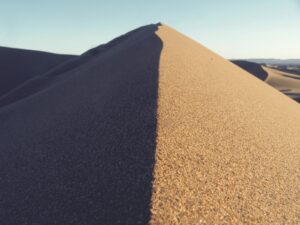
The Scottish College for Chinese medicine provides introductory courses for all, explaining Chinese medicine and its cultural background.

Master Tung’s acupuncture is a hidden treasure, lost to China but recovered in Taiwan from where it spread round the world.

Knee pain has five main causes. It’s certainly worth trying acupuncture before you resort to surgery!
Subscribe to the Newsletter
If you are interested in understanding how Traditional Chinese Medicine can improve your life sign up to my newsletter for the latest updates.
Subscribe to the Newsletter
If you are interested in understanding how Traditional Chinese Medicine can improve your life sign up to my newsletter for the latest updates.
2 Responses
If you have blood statsis, do you have to focus on nutrition first, or does that come after the blood has moved?
It’s a moot point. If your diet is atrocious, don’t delay improving it until your Blood is moving because the wrong foods will continue to retard your Blood movement. If diet is already ok but not perfect, work on moving the Blood.